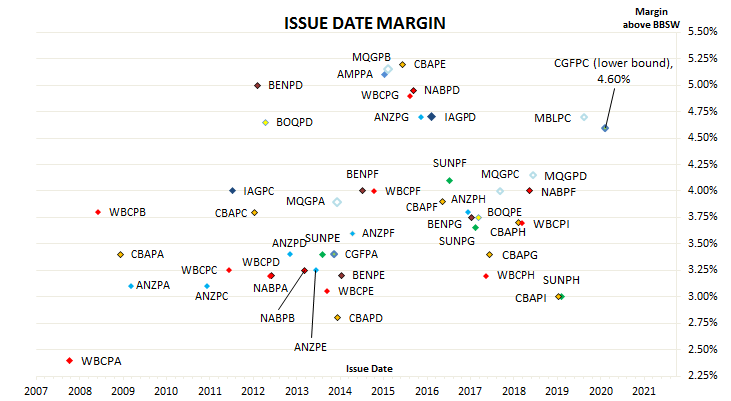Summary: Challenger to issue hybrid security deferred from March; issue margin at noticeable premium to most non-major bank hybrids.
In recent years, when an existing Australian hybrid approaches its first call date (or first optional exchange date), speculation turns to the likelihood of a replacement security. Challenger was expected to do as much early this year as its Challenger Capital Notes (ASX code: CGFPA) had a call date in May. However, in late March, Challenger announced “sustained volatility and the absence of an orderly market” made a replacement security “not feasible”.
Challenger now plans to raise $250 million via an issue of Capital Notes 3 (ASX code: CGFPC) securities, with the ability to raise more or less than this amount. The new securities will be perpetual, convertible, subordinated, unsecured, redeemable, transferable notes and the proceeds will be used to fund its life business, Challenger Life Company, as well as refinancing its existing Challenger Capital Notes. There are $345 million worth of Capital Notes outstanding.
The new notes have some features in common with both equities and debt securities. Distributions are at the discretion of directors but they are calculated according to a set formula with reference to the $100 face value of the securities. As Challenger Limited is not a bank but the holding company of a life company, the notes will fund the purchase of Additional Tier 1 (AT1) capital in its subsidiary, Challenger Life. However, the notes will still have the now-standard “event” clauses which may lead to early conversion into ordinary shares or a write-off of the capital notes should APRA require it. In the event Challenger were wound up and APRA had not already forced a write-off, its hybrids would rank above ordinary shares but below ordinary debt securities and other liabilities.
The new capital notes have an indicative distribution rate equivalent to 3 month BBSW plus a margin in a range of 460bps to 480bps. The final margin will be determined by a “book build” which will be announced on 20 October 2020. A book build is a tender process managed by investment banks on behalf of the issuer in which investment institutions each place bids for a set volume at a price/yield. (This is the same way as the AOFM holds tenders to sell government bonds each week). If history is any guide, then the margin is likely to be set at the lower end.
“They have to pay that sort of margin for that sort of credit risk,” according to one stockbroking source.

The chart above shows the history of issue margins of hybrid securities over the last decade or so, including the GFC period in 2008/2009. The new capital notes are shown at the lower end of the indicative margin (460bps).

